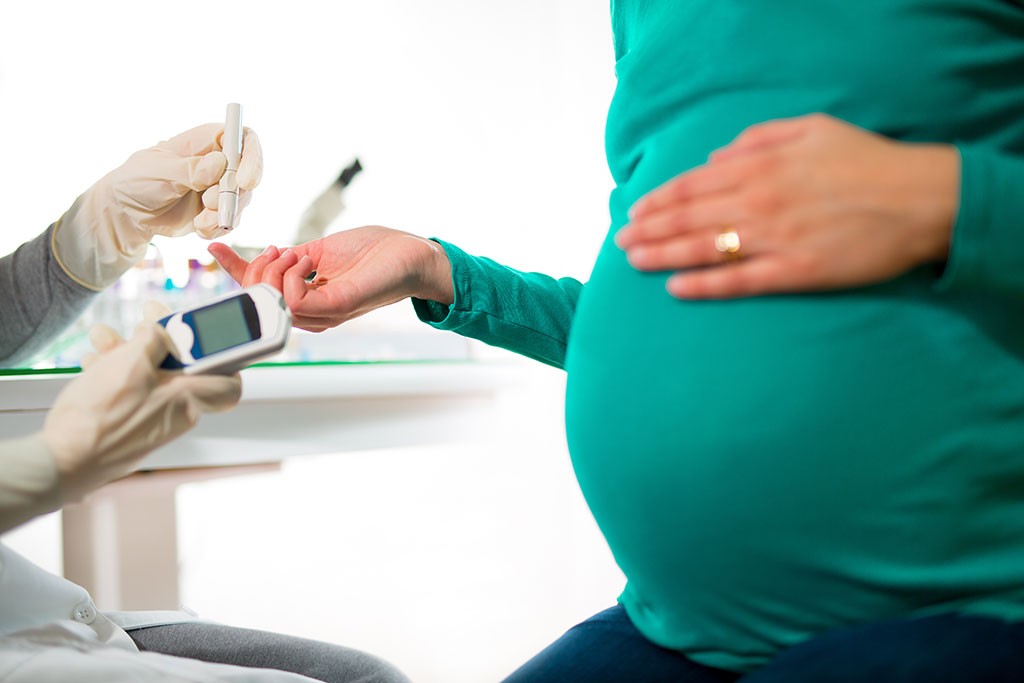Fasting blood sugar is a measure of the glucose concentration in the blood after an overnight fast, typically for at least 8 hours. This test is commonly used to assess a person’s blood sugar levels and is a key component in the diagnosis and management of diabetes. The fasting blood sugar test is usually performed in the morning after an overnight fast. Fasting allows healthcare professionals to get a baseline reading without the influence of recent meals.
In general, according to Emedicinehealth normal fasting blood sugar levels are typically below 100 milligrams per deciliter (mg/dL). Levels between 100 and 125 mg/dL may indicate prediabetes, and levels of 126 mg/dL or higher on more than one occasion may suggest diabetes. For people with diabetes, regular monitoring of fasting blood sugar is crucial for managing the condition. Let’s take a closer look at what happens if your fasting blood sugar 120 or more.

Significance of the Fasting Blood Sugar Test
Fasting blood sugar levels provide valuable information for adjusting treatment plans and lifestyle factors to maintain optimal glucose levels. Monitoring these levels helps individuals with diabetes make informed decisions about medication, insulin dosages, and dietary choices.
Fasting blood sugar levels are measured in milligrams per deciliter (mg/dL) in the United States. In other countries, millimoles per liter (mmol/L) may be used as the unit of measurement.


Fasting Blood Sugar Test: Why is it conducted in the morning?

This test is conducted in the morning. Conducting the Fasting Blood Sugar Test in the morning has specific reasons related to the body’s metabolic state during the overnight fasting period. Here’s why the test is typically performed in the morning:
Baseline Measurement:
Morning fasting blood sugar levels provide a baseline measurement of how the body manages glucose without the influence of recent meals. The overnight fasting period ensures that the body has not been exposed to food, allowing healthcare professionals to obtain a more accurate reflection of the body’s natural state. For example a fasting blood sugar 120 in morning indicates that even without any food, your body has sugar level 120 before eating.
Consistency in Fasting Period:
Conducting the test in the morning ensures a consistent fasting period for individuals. Most people naturally fast overnight while they sleep, creating a standardised and reproducible condition for testing. A fasting period of at least 8 hours is recommended to obtain reliable results, and performing the test in the morning helps achieve this duration.
Standardised Comparison:
By testing in the morning, healthcare providers can compare results more consistently between individuals. This standardisation helps in interpreting and diagnosing conditions such as diabetes and prediabetes.
Circadian Rhythms:
The body’s glucose metabolism exhibits circadian rhythms, with changes in insulin sensitivity and glucose production throughout the day and night. Morning testing captures a specific point in this cycle, providing insights into how well the body manages glucose after an extended fasting period.
Routine Clinical Practice:
Performing the test in the morning aligns with routine clinical practices and makes it more convenient for individuals to adhere to the fasting requirements. It also facilitates coordination with laboratory schedules for sample collection and analysis.
Read More: Know About mmol/l to mg/dl Blood Glucose Converter
Fasting Blood Sugar Test: The Procedure
If you’re a newly diagnosed diabetic patient, understanding the Fasting Blood Sugar Test and its procedure is important. Here’s a user-friendly guide – Fasting Blood Sugar Test: What to Expect
1. Before the Test:
You’ll be asked to fast for at least 8 hours before the test. This means no food or drinks, except water, from the evening before your appointment.
2. Arriving at the Lab:
When you arrive at the lab, you’ll need to provide some information and may be asked to confirm your recent symptoms and health status.
3. Meeting the Healthcare Professional:
A healthcare professional, often a nurse or phlebotomist, will explain the test to you. Don’t hesitate to ask questions—it’s important to feel comfortable and informed.
4. Choosing a Vein:
The professional will select a vein in your arm. They’ll clean the area to ensure it’s sterile and ready for the blood draw.
5. Blood Sample Collection:
The actual blood draw is quick and usually feels like a small pinch. Take a deep breath, and it’ll be over before you know it.
6. Bandaging Up:
After the blood draw, a bandage or cotton ball will be applied to the site to stop any bleeding. You may be asked to apply gentle pressure to help with clotting.
7. Labeling and Documentation:
Your blood sample is carefully labeled with your information to ensure accurate tracking. This step is crucial to prevent mix-ups.
8. Waiting for Results:
Your blood sample will be sent to a lab for analysis. Results are usually available within a short time.
9. Understanding the Numbers:
Once you receive your results, you’ll see a number measured in milligrams per deciliter (mg/dL) or millimoles per liter (mmol/L). Normal fasting blood sugar levels are generally below 100 mg/dL.
10. What’s Next:
If your levels are within the normal range, that’s great! Your healthcare team will guide you on maintaining good blood sugar control.
If your levels are elevated, i.e. you have 120 fasting glucose, your healthcare provider will work with you on a plan to manage your diabetes. This may include lifestyle changes, medications, or insulin.
Remember, the Fasting Blood Sugar Test is a tool to help you and your healthcare team understand how well your body is managing glucose. Regular tests and open communication with your healthcare provider will play a key role in managing your diabetes effectively. Don’t hesitate to reach out to your healthcare provider if you have any questions or concerns along the way!
Read More: Is Type 2 Diabetes Curable?
Fasting Blood Sugar Levels and their Meaning
When evaluating fasting blood sugar levels in adults, it’s crucial to understand the various ranges and what they signify. Here is a detailed breakdown of normal, high, and low fasting blood sugar levels for adults.
| Fasting Glucose Level | Interpretation |
|---|---|
| Normal | Less than or equal to 100mg/dL |
| Consistent with Diabetes | Greater than or equal to 120mg/dL |
| Target Range (Type 2 Diabetes) | 80 to 130mg/dL |
This means that if the reading shows blood glucose 120 fasting, then you have a high risk of developing diabetes or are already diabetic.
| HbA1C Level | Interpretation |
|---|---|
| No Diabetes | Less than 5.7 |
| Possible Prediabetes | 5.7-6.4 |
| Consistent with Diabetes | Greater than or equal to 6.5 |
| Target for Diabetes | Less than or equal to 7.0 |
Read More: Foods To Avoid While Taking Metformin.
Health Implications of Different Levels
Understanding the implications of fasting blood sugar levels is vital for overall health:
- Normal Levels (Less than or equal to 100mg/dL): Indicate good glucose control and lower risk of diabetes.
- Consistent with Diabetes (Greater than or equal to 126mg/dL): Signifies potential diabetes, requiring further diagnostic tests and consultation with a healthcare professional.
- Target Range for Type 2 Diabetes (80 to 130mg/dL): Aim for optimal glucose control to manage diabetes effectively.
Fasting Blood Sugar for Children
Understanding fasting blood sugar levels in children is critical for early detection and management:
| Age Group | Normal Fasting Glucose | Consistent with Diabetes | Target Range (Type 2 Diabetes) |
|---|---|---|---|
| Children and Adolescents | Less than or equal to 100mg/dL | Greater than or equal to 126mg/dL | 80 to 130mg/dL |
Factors Influencing Blood Sugar Levels in Children
Factors influencing children’s blood sugar levels include diet, physical activity, and genetics:
- Diet: Ensure a balanced diet with a focus on whole foods and controlled sugar intake.
- Physical Activity: Encourage regular exercise to promote healthy blood sugar levels.
Fasting Blood Sugar for Teens
Adolescence introduces hormonal changes that can impact blood sugar levels and insulin sensitivity. It’s essential to understand these changes for effective monitoring:
| Age Group | Normal Fasting Glucose | Consistent with Diabetes | Target Range (Type 2 Diabetes) |
|---|---|---|---|
| Teenagers | Less than or equal to 100mg/dL | Greater than or equal to 120mg/dL | 80 to 130mg/dL |
Read More: Insulin Resistance: Symptoms, Causes, Tests, Preventions & Complications
Fasting Blood Sugar in Gestational Diabetes
Gestational diabetes presents unique challenges during pregnancy. It can increase the risk of complications for both the mother and the baby.
Fasting Blood Sugar Recommendations for Pregnant Women
| Gestational Diabetes | Target Glucose Range |
|---|---|
| During Pregnancy | Consult healthcare provider for personalised recommendations. |
What to Do if You Have Empty Stomach Sugar Level 120? Tips for Maintaining Healthy Fasting Blood Sugar Levels

Here are some lifestyle changes for better blood sugar management if you have blood sugar 120 in the morning. Implementing these changes is essential for maintaining healthy fasting blood sugar levels:
- Dietary Modifications: Emphasize whole foods, complex carbohydrates, and limit processed sugars.
- Regular Physical Activity: Incorporate exercise into daily routines to improve insulin sensitivity.
- Weight Management: Maintain a healthy weight through a balanced lifestyle.
- Regular Monitoring: Regularly check blood sugar levels, especially for those at risk.
- Consultation with Healthcare Professionals: Regularly consult healthcare providers for personalized advice and adjustments to treatment plans
Conclusion
Lifestyle adjustments play a pivotal role in sustaining healthy levels, involving dietary modifications, regular exercise, weight management, and consistent monitoring. Prioritising well-being involves understanding these benchmarks and making informed choices. It empowers individuals to take charge of their health by embracing small but impactful changes. Consistent efforts, coupled with regular consultations with healthcare professionals, ensure a proactive approach to health. Remember, health is a personal investment, and every positive step taken towards maintaining optimal blood sugar levels contributes to a more fulfilling and healthier life.
FAQs (Frequently Asked Questions)
Fasting blood sugar 120 mg dL suggests elevated glucose levels, indicating a potential concern. It falls within the prediabetes range, emphasizing the need for lifestyle adjustments and consultation with a healthcare professional.
A fasting blood sugar level of 120 is not within the diabetic range, but it does indicate an increased risk. It falls into the prediabetes category, signaling the importance of proactive measures to prevent the progression to diabetes.
Consistently having a fasting blood sugar of 120 necessitates proactive steps. Consult your healthcare provider for a comprehensive assessment, personalized guidance, and recommendations for lifestyle changes such as diet and exercise.
No, a fasting blood sugar level of 120 before breakfast is not within the normal range. It indicates a need for attention and lifestyle modifications to prevent further increases in blood sugar levels.
Lowering a fasting blood sugar of 120 involves lifestyle changes like adopting a healthier diet, increasing physical activity, and potentially medication as advised by a healthcare professional.
A blood sugar level of 120 before eating suggests that glucose regulation may need attention. It’s essential to monitor consistently, make dietary adjustments, and consult with a healthcare provider for guidance.
A fasting blood sugar level of 120 falls into the prediabetes range. While not diabetic, it indicates an increased risk, emphasizing the importance of proactive measures to prevent progression.
Yes, glucose levels can reach 120 after fasting. It’s essential to consider overall trends, lifestyle factors, and consult with a healthcare professional for a comprehensive understanding of your metabolic health.
Metformin is commonly prescribed to manage blood sugar levels, and it may be considered for individuals with a fasting blood sugar of 120. A fasting blood sugar of 120 with metformin suggests ongoing glucose management efforts.
Disclaimer
This site provides educational content; however, it is not a substitute for professional medical guidance. Readers should consult their healthcare professional for personalised guidance. We work hard to provide accurate and helpful information. Your well-being is important to us, and we value your feedback. To learn more, visit our editorial policy page for details on our content guidelines and the content creation process.

 English
English












